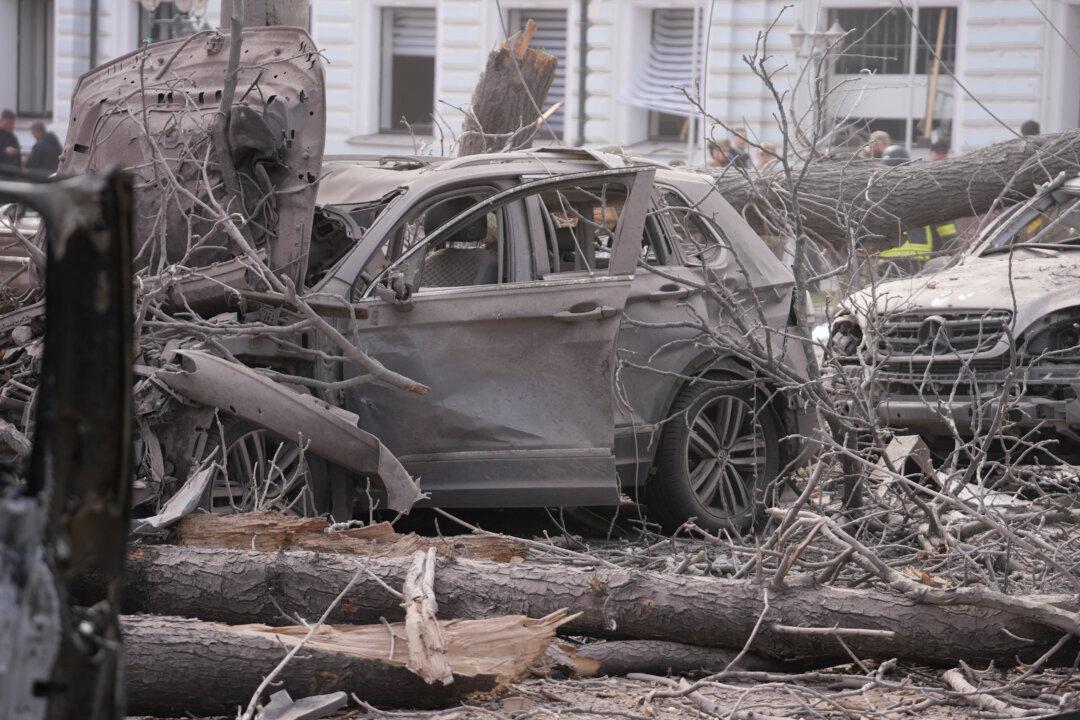Moscow is considering means of responding to what it calls “provocations” by U.S. drones operating over the Black Sea, according to Russia’s defense ministry.
“Defense Minister Andrey Belousov has instructed the General Staff of the Armed Forces to draw up proposals for mounting a prompt response to the [U.S.] provocations,” the ministry said in a June 28 statement.
It went on to state that it had detected a recent uptick in U.S. drone activity in the region, and added it was presumably for reconnaissance and collecting data on potential Russian targets.
“This indicates the growing involvement of the United States and NATO countries in the ongoing conflict in Ukraine on the side of the Kyiv regime,” the ministry said.
“It also increases the likelihood of potential incidents with Russian military aircraft operating in the region, thereby increasing the risk of direct confrontation between NATO and Russia.”
Such incidents involving United States and Russian military aircraft have happened before.
In March of last year, a Russian Su-27 fighter jet intercepted and damaged an American MQ-9 Reaper drone, causing it to crash into the Black Sea.
The incident marked the first direct clash between Russian and U.S. military forces since the Cold War, which ended in 1991 with the collapse of the Soviet Union.
The U.S. State Department and Department of Defense have yet to respond to The Epoch Times’ request for comment on the Russian ministry’s statement.

ATACMS Over Crimea
The assertions by Russia’s defense ministry come five days after the Ukrainian military staged a long-range missile attack on the Black Sea region of Crimea, which was effectively annexed by Russia in 2014.The June 23 attack, which used ATACMS (Army Tactical Missile System) missiles, killed four civilians on a beach near the Crimean Port of Sevastopol, which is home to Russia’s Black Sea Fleet.
Moscow has been quick to blame the incident on the United States, which supplied Kyiv with the ATACMS missiles reportedly used in the attack.
Russia’s foreign ministry has also claimed that “American specialists” chose the targets of the attack “based on U.S. satellite reconnaissance data.”
It has further asserted that a U.S. Global Hawk reconnaissance drone was operating on standby “in the skies near Crimea” at the time of the missile attack.
Asked to comment on the Russian claims, a U.S. State Department spokesperson told The Epoch Times that the Sevastopol beach where the casualties occurred was “not the intended target.”
“We believe a Russian air-defense missile intercepted a Ukrainian missile that was heading towards a military target in Crimea,” the spokesperson said.
“Shrapnel from the intercept is what fell on the beach, injuring civilians.”
As for the alleged involvement of “American specialists” in the selection of targets, the spokesperson stated, “Ukraine chooses its own military targets and makes its own military decisions about what to strike.”
Kyiv, meanwhile, has largely refrained from commenting on the June 23 missile attack while denying that its military targets civilians.

It wasn’t the first time that U.S. ATACMS missiles were reportedly used to target Russian positions in Crimea.
In April, Russia’s defense ministry claimed to have downed six incoming missiles near Crimea before they could hit their targets.
Kyiv later confirmed that its forces had fired a barrage of long-range missiles at two Russian airbases located in the peninsula.
No casualties or damage, however, were reported from the missile strike.
The June 23 missile attack, by contrast, has drawn threats of retaliation from Moscow.
“Such actions by Washington will not go unanswered,” Russia’s foreign ministry said in the wake of the incident.
Steadily mounting tensions between Moscow and Washington prompted U.S. Defense Secretary Lloyd Austin to request a phone call with Mr. Belousov, his Russian counterpart, on June 25.
During the call, Mr. Austin “emphasized the importance of maintaining lines of communication,” a Pentagon spokesman later told reporters without providing further details.
Mr. Belousov, for his part, conveyed to the U.S. defense secretary “the danger of further escalation due to the continued supply of American weapons to Ukraine’s military,” according to Russia’s defense ministry.
The last time Mr. Austin spoke with his Russian counterpart—then-Defense Minister Gen. Sergey Shoigu—was in March 2023.
In May 2024, Mr. Belousov replaced Gen. Shoigu, who had served as Russia’s defense chief since 2012.







